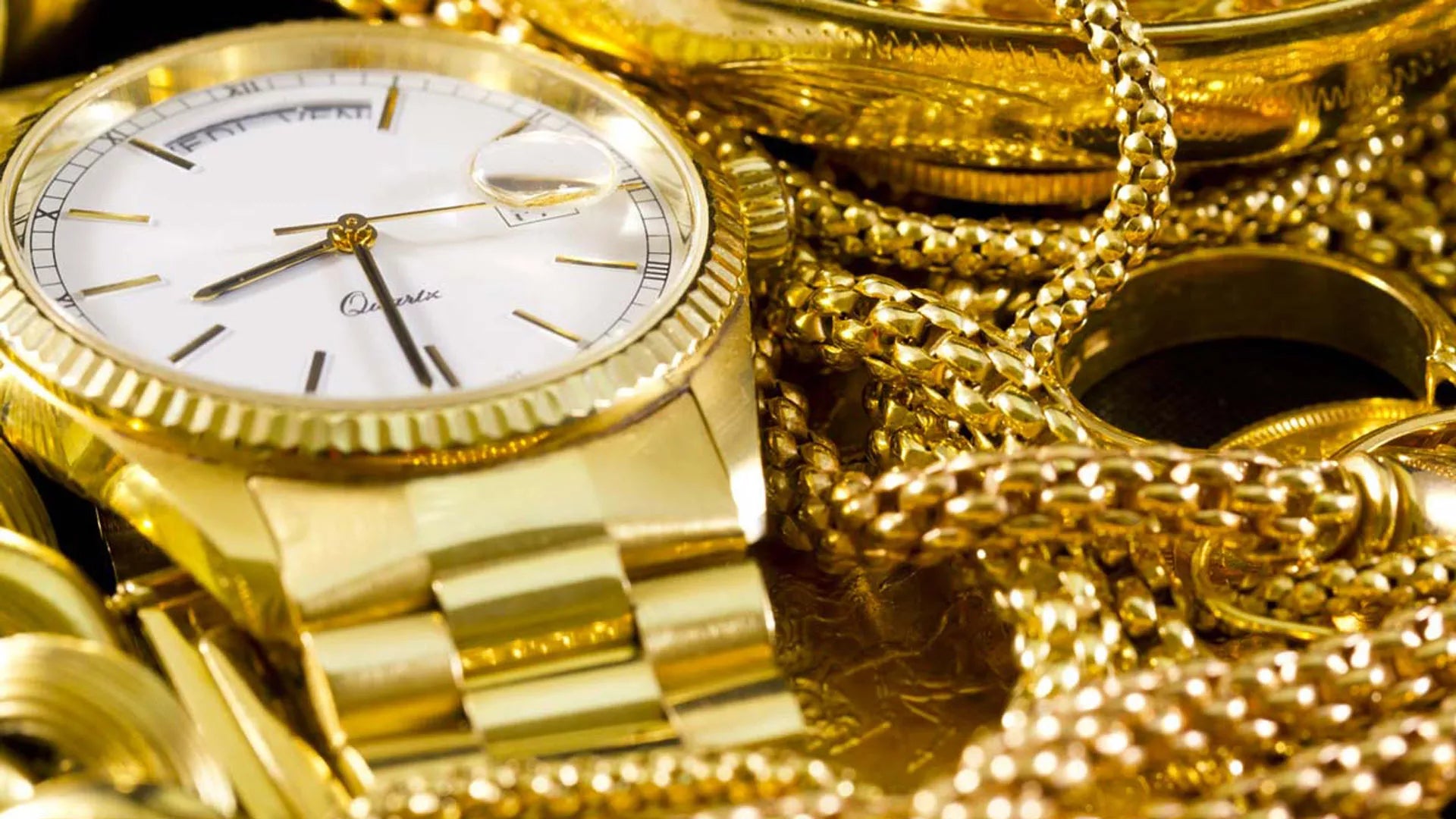If you're wondering if the gold you bought or found at home is real, the safest way to know is to take it to a jeweler and have it examined. However, if you want to check for yourself, here is a list of tests you can perform to determine this.
Examine the piece for official writing or markings. If you find a hallmark (a mark imprinted in the metal), it should indicate the purity of the gold, expressed in thousandths (1-999 or 0.1-0.999) or karats (10k, 14k, 18k, 22k or 24k). Generally, gold objects have no less than 9 carats (in America any artifact with less than 10k is considered fake gold) and always bear the hallmark indicating the carat. Using a magnifying glass will make it easier to locate the stamp, and if it is not present, it is possible that the item is fake. It is possible, especially on older items, that the hallmark is illegible or disappeared due to wear. Counterfeit items often have a stamp that appears authentic. However, it may be necessary to conduct further tests.
Check if there is a noticeable color difference. It is important to check the surface color in the areas most exposed to friction (usually around the edges) as it is easy to see if the object is just covered in gold or is solid gold.
- If the gold appears to be coming off and you can see a different colored metal surface, the item is probably just covered in gold.
Who hasn't seen in the movies a gold miner, a goldsmith or a bank clerk who bites into a gold coin to check that it's real? We also see Olympic athletes biting into their "gold" medals upon delivery (whether this has any use is a separate case).
Check if there are any marks left on your gold. In theory, real gold should have indentations left by your teeth: the deeper the indentations, the purer the gold.
- This is not a recommended method, mainly because: it can damage your teeth; damages gold; there are metals, such as lead, which are even softer than gold and can make what could instead be, for example, just lead covered in gold, look like gold.
Hold a magnet near the object. Gold is a diamagnetic metal (i.e. it does not react to magnetic fields), therefore, if the object is attracted by the magnet it is fake. However, just because the object is not attracted to the magnet does not mean that the material is gold, as other diamagnetic metals are also used to counterfeit gold objects.
Density test : There are very few metals denser than gold (and they are all very rare metals, some not even existing in nature). The density of pure 24k gold is approximately 19.32 g/cm 3 , a very high value compared to that of the most common metals. Measuring the density of your items can help you determine if your gold is real. Typically, the higher the density, the purer the gold. Remember that this test works best only if the object is made entirely of gold - the presence of gems or other decorations would affect the result. Read the Warnings section below for more information on the density test.
Weigh your gold. You can ask a jeweler or goldsmith to do it for you (they usually do it for free) if you don't have a suitable scale. You will need the weight in grams.
Fill a test tube with water.
- If possible, use a test tube or container with a graduated scale, so it will be much easier to take measurements for this test.
- The amount of water you use is not important, as long as you don't fill the test tube to the brim: we have to immerse the gold in the water and the liquid level will necessarily have to rise.
- It is also important to remember to mark the water level before and after the dive.
- Your gold object weighs 38 grams and increases the water level by 2 milliliters on the graduated scale (that is, it has a volume of approximately 2 ml). Using the formula m/V = 38 g/2 ml, one would obtain the result of 19 g/ml (1 ml = 1 cm 3 ), which is a value very close to the density of pure gold.
- Remember that the purity of the gold influences the density, so you will get different values depending on the carat:
- 14k – 12.9 to 14.6 g/ml
- 18k yellow – 15.2 to 15.9 g/ml
- 18k white – 14.7 to 16.9 g/ml
- 22k – 17.7 to 17.8 g/ml
- If the material turns green, then the item is made of a base metal or is just covered in gold.




 Progetto di Marketing Strategico per lo sviluppo del canale di vendita online BtoC.
Progetto di Marketing Strategico per lo sviluppo del canale di vendita online BtoC.